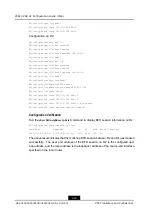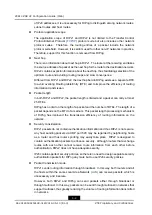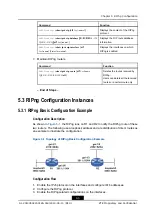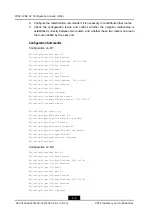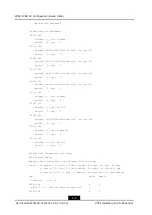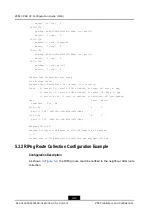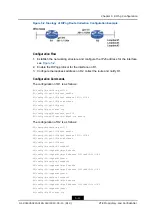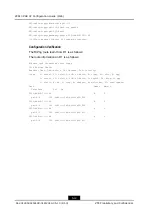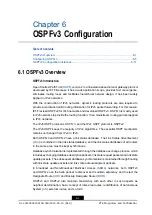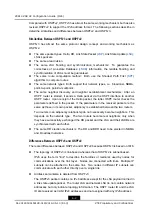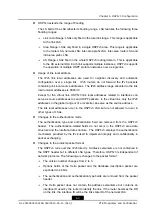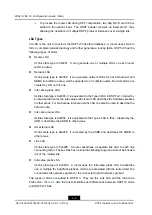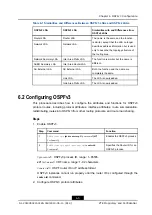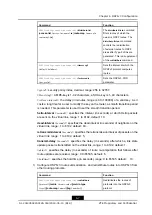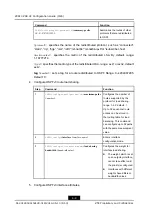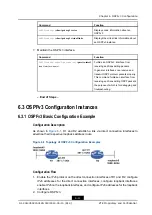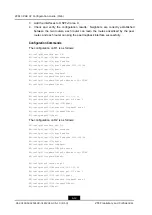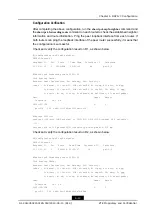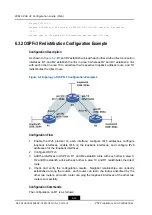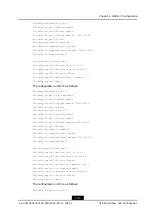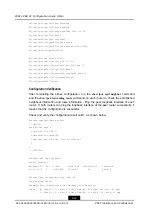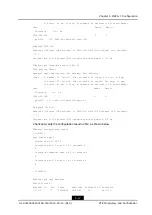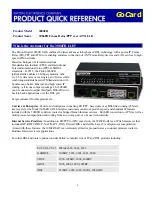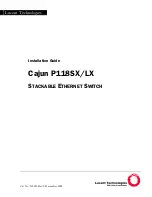
ZXR10 ZSR V2 Configuration Guide (IPv6)
Compared with OSPFv2, OSPFv3 has almost the same working mechanism but has also
revised OSPFv2 to support the IPv6 address format. The following sections describe in
detail the similarities and differences between OSPFv2 and OSPFv3.
Similarities Between OSPFv3 and OSPFv2
OSPFv3 has almost the same protocol design concept and working mechanism as
OSPFv2.
l
The same packet types: Hello, DD, Link State Packet (
LSAck packets.
l
The same area division.
l
The same LSA flooding and synchronization mechanisms:
To guarantee the
correctness of Link-state Database (
) information, the reliable flooding and
synchronization of LSAs must be guaranteed.
l
The same route computation method: Both use the Shortest Path First (
algorithm to compute routes.
l
The same network types: Both support four network types, i.e. broadcast, NBMA,
point-to-point, point-to-multipoint.
l
The same neighbor discovery and neighbor establishment mechanisms: After an
OSPF router is started, it sends a Hello packet via the OSPF interface to another
OSPF router. Upon receipt of the Hello packet, the latter OSPF router checks the
parameters defined in the packet. If the parameters in the received packet are the
same as those in its own packet, adjacency is established between the two routers.
Two routers in an adjacency relationship do not necessarily become neighbors. This
depends on the network type. The two routers become real neighbors only when
they have successfully exchanged the DD packet and the LSA and their LSDBs are
synchronized with each other.
l
The same DR election mechanism: The DR and BDR need to be elected in NBMA
and broadcast networks.
Differences Between OSPFv3 and OSPFv2
There are differences between OSPFv3 and OSPFv2 because OSPFv3 is based on IPv6.
l
The topology of OSPFv3 is link-based whereas that of OSPFv2 is subnet-based.
IPv6 uses the term "link" to describe the facilities or mediums used by nodes for
communications over the link layer. Nodes are connected with links. Multiple IP
subnets can be attached to the same link. Two nodes in different IP subnets can
communicate with each other directly over a single link.
l
Address semanteme is deleted from OSPFv3.
The OSPFv3 packet contains no IPv6 address except for the LSA payload carried in
a link state update packet. The router LSA and network LSA do not contain network
addresses but only indicate topology information. The OSPF router ID and the LSA
ID are reserved as 32-bit IPv4 addresses and not assigned with any IPv6 address.
6-2
SJ-20140504150128-018|2014-05-10 (R1.0)
ZTE Proprietary and Confidential

